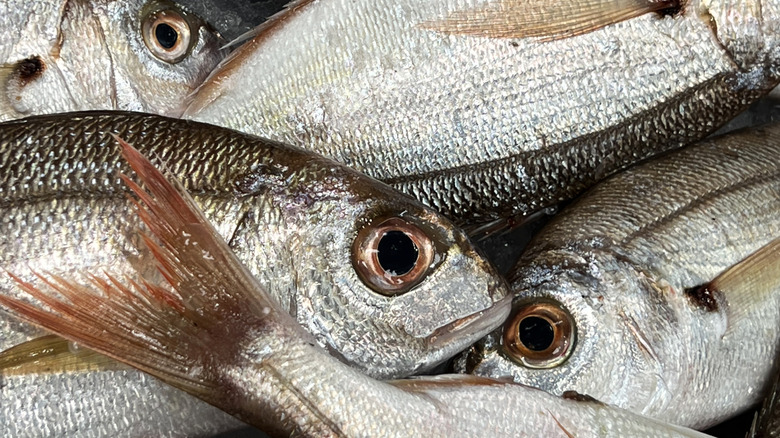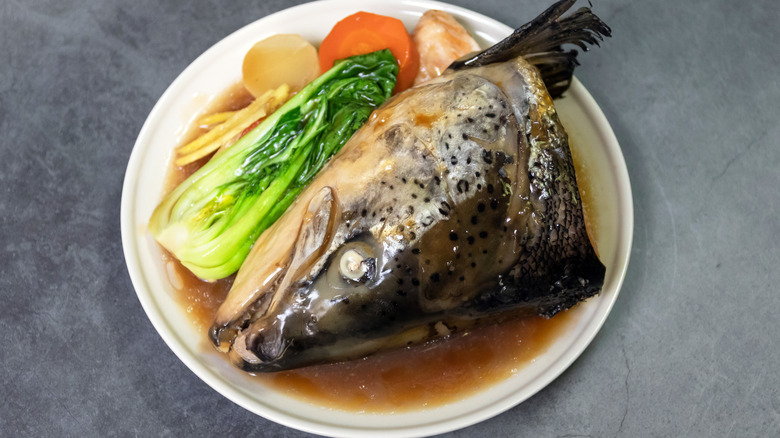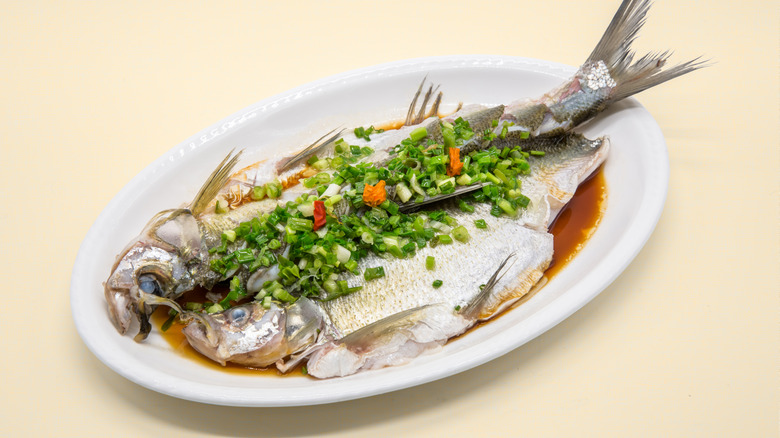Why Some Consider Fish Eyes A Delicacy (And Maybe You Should Too)
Sure, you're an adventurer when it comes to food, but fish eyes might be where you draw the line. Well, maybe it's time to move the goalpost. Give some serious thought to trying fish eyes, and you'll probably see their untapped potential to be served on menus throughout the United States. It's not that you can't find any restaurants that offer them — if there's a whole fish on the menu, it should come with the eyes — but actually chowing down on the eyes themselves isn't something that is necessarily expected in Western culture. But that doesn't mean it has to stay that way.
Fish eyes have long been celebrated as a delicacy in many cultures. Yes, these overlooked parts of the fish are lauded for their rich, savory flavor and unique texture; it's these qualities, along with their cultural significance, that have bolstered their allure among many peoples.
Fish eyes offer more than just an intriguing taste; they're also rich in omega-3 fatty acids. The texture is slightly gelatinous, which can be an acquired taste for some but is considered very desirable for others. You can throw them in soups, stews, or grilled dishes, which is what you'll see in cuisine across Asia, Europe, Africa, and beyond. Many of the people who choose to eat them do so out of respect for the whole animal — by reducing waste and making the most of every part.
Why fish eyes taste so good
The unique flavor has everything to do with the various layers. Some people describe it as having a slightly sticky and gummy texture when you first bite in, but it transitions into a crunchy center that bursts with a rich and creamy finish. You'll also experience a flavor that's briny and savory. They really do have the luxurious, umami-rich flavors that you're looking for.
The gummy quality may sound off-putting to some people, but it actually creates a silky mouthfeel. When cooked, fish eyes absorb the spices and seasonings they're prepared in, which makes them a versatile ingredient in foods from all over the world. Some simmer them in broth while others fry them to crispy perfection. They are also used to thicken sauces and stocks.
Fish eyes are also a cultural symbol for many communities who traditionally view eating a whole fish as perfectly acceptable. The fish itself may represent prosperity, and a whole fish is often a special occasion dish. In Chinese culture, the fish eye is the prized bite that is offered to a special guest. Additionally, enjoying fish in this manner is an excellent way to reduce food waste by using as much of the animal as you can.
How fish eyes are used in cooking
Fish eyes find their way into a vast assortment of dishes. Take Chinese cuisine, for instance, where they're often part of steamed or braised fish heads, the eyes adding richness to the sauce or broth. The eyes of large fish can even be served on their own. In Japan, fish eyes are sometimes simmered in miso- or sake-based sauces to reinforce that coveted umami flavor. In Russia, head-on fish make up the base of a traditional soup called ukha, while sinigang is a Filipino meal that features the whole fish head as an integral part of the dish. This sour soup balances the creaminess of the eyes with the tang of tamarind, which gives you this incredible harmony of tastes.
You can pluck the eyes right out of roasted or grilled fish heads seasoned with olive oil, lemon, and herbs, or enjoy them as a special spicy bite when you're eating a fish curry. Some people find the eyes to be the very best thing to eat when they fry or grill a whole fish. If you've never tried fish eyes before, they might surprise you with their taste and versatility!


